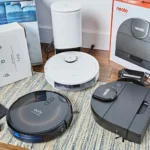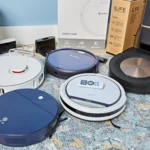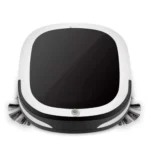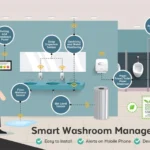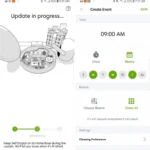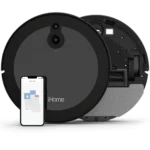Have you ever found yourself frustrated with the short battery life of your vacuum cleaner? Do you wish you could find a vacuum that not only cleans smartly, but also lasts longer on a single charge? Look no further! In this guide, we’ll explore the world of smart vacuums with long-lasting batteries. We will delve into what makes a vacuum ‘smart’, discuss the meaning of battery life, and explore the factors to consider when choosing such a vacuum. Additionally, we’ll provide tips on how to maintain your vacuum’s battery life, ensuring your cleaning companion stays efficient for longer. Say goodbye to the days of a dying vacuum mid-clean, and say hello to a smarter, more efficient cleaning experience.
Finding a Smart Vacuum with Long Battery Life
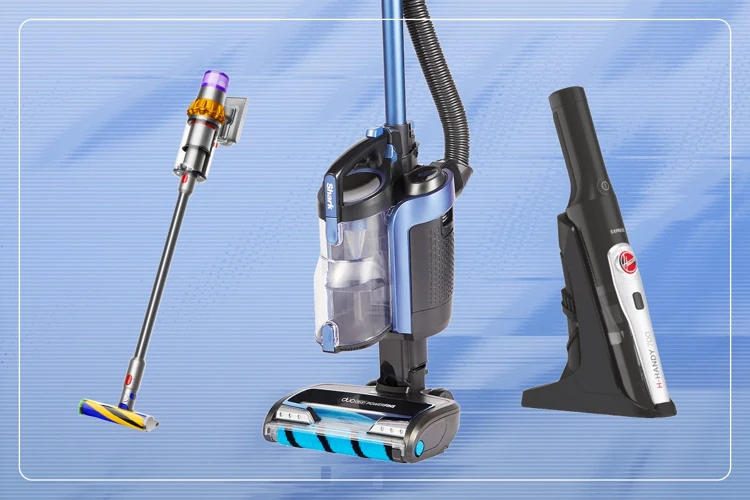
Are you tired of constantly recharging your smart vacuum in the middle of cleaning sessions? Do you want to find a smart vacuum with a long-lasting battery life that will keep your home clean without interruption? Look no further, as we provide you with essential tips for choosing a smart vacuum with a powerful and long battery life. In this section, we will cover what a smart vacuum is, the importance of battery life, and the factors that affect battery life. By the end of this section, you will be equipped with the knowledge to choose the right smart vacuum for your needs. To learn more about the design and efficiency of smart vacuums, check out our article on designing smart vacuum efficiency.
What is a smart vacuum cleaner?
A smart vacuum cleaner, also known as a robot vacuum cleaner or an autonomous vacuum cleaner, is an intelligent device that uses sensors, algorithms, and intelligent cleaning technology to clean floors without human intervention. The smart vacuum can navigate around the house, avoid obstacles, and clean up dirt and debris from various surfaces.
Some of the key features of a smart vacuum cleaner include:
- Remote control operation
- Wi-Fi connectivity, which allows users to connect the device to their smartphone or tablet and control it using an app
- Automatic charging
- Mapping technology, which helps the vacuum create a map of the room and navigate around obstacles
- Intelligent cleaning techniques, such as edge cleaning, spot cleaning, and scheduled cleaning
- Smart sensors, which help the vacuum detect dirt and debris and adjust its cleaning pattern accordingly
These devices come in various shapes and sizes, with different designs, features and capabilities. Some models are designed for specific cleaning tasks, such as hardwood floors, carpets, or pet hair, while others are better suited for all-around cleaning. Smart vacuums also have different battery types, capacities, and run times, which are important factors to consider when choosing the right vacuum for your needs. To learn more about the impact of battery life on smart vacuums, check out our article on comparing smart vacuum cleaners based on battery life. Additionally, the design of the battery can also play a role in its life and performance – to learn more about battery type and capacity in smart vacuums, read our article on battery type and capacity in smart vacuums.
What does battery life mean for smart vacuums?
Smart vacuum cleaners are becoming increasingly popular in households, but a common concern is their battery life. Battery life refers to the amount of time the smart vacuum cleaner can run on a single charge before it needs to be recharged. This is an essential aspect of smart vacuums because it determines how effective the vacuum will be in cleaning your home.
The battery life of a smart vacuum cleaner is impacted by several factors, including the battery voltage, capacity, and the type of battery used. It is important to consider these factors before purchasing a smart vacuum cleaner to ensure its battery life meets your expectations.
The size of the home or the space to be cleaned also plays a role in determining battery life. A smart vacuum cleaner may have a longer battery life for a smaller space, while a larger space may require additional charging. In some cases, you may need to pause cleaning and recharge the vacuum to complete cleaning a larger area.
Overall, the battery life of a smart vacuum cleaner heavily impacts its usefulness, and it is essential to consider this feature when choosing a smart vacuum cleaner. By taking into account factors such as battery voltage, capacity, type of battery, and charging time, you can make an informed decision about the right smart vacuum cleaner that meets your cleaning needs.
To design battery life of your smart vacuum, you can take some steps which can help extend its life. Regular cleaning and maintenance of your smart vacuum cleaner components such as filters, dustbin, and brushes not only ensure you are getting the best cleaning experience but also contribute to the longevity of the battery. Read more about tips to extend the battery life of your smart vacuum cleaner at extend-battery-life-smart-vacuum.
What affects battery life in a smart vacuum cleaner?
Smart vacuum cleaners are a great invention that makes the process of cleaning easier and less time-consuming. However, one of the drawbacks of a smart vacuum cleaner is its battery life. A smart vacuum cleaner’s battery life is determined by several factors that you need to consider when purchasing one. Let’s explore the factors that affect battery life in a smart vacuum cleaner.
Battery Capacity and Voltage: The battery capacity and voltage are the primary factors that affect the battery life of a smart vacuum cleaner. The higher the battery capacity, the longer the battery life will be. The same goes for voltage; the higher the voltage, the more powerful the motor, which also affects the battery life.
Type of Battery: The type of battery used in the smart vacuum cleaner is also an important factor that affects battery life. Lithium-ion batteries tend to last longer and have a shorter charging time than other types of batteries. However, they are more expensive than other types of batteries.
Battery Life and Run Time: The battery life and run time of a smart vacuum cleaner are closely related. The battery life refers to the total time the battery can last, while the run time refers to the amount of time the vacuum cleaner can run on a single charge. Factors that can affect battery life include the type of surface being cleaned, the suction power, and the number of accessories being used.
Charging Time: The charging time is another factor that affects the battery life of a smart vacuum cleaner. Some models have a fast-charging feature that allows you to charge the vacuum cleaner quickly. Make sure you choose a model with a short charging time so that you can use it whenever you need it.
Smart Features: Smart features such as WiFi connectivity, voice control, and mobile app control can also affect the battery life of a smart vacuum cleaner. These features are great to have, but they can drain the battery faster.
Noise Level: The noise level of a smart vacuum cleaner can also affect its battery life. A quieter vacuum cleaner may have a longer battery life than a louder one. This is because the motor and other components in the quieter vacuum cleaner may be more energy-efficient.
When choosing a smart vacuum cleaner with a long-lasting battery life, consider the factors above. You can also check out our article about designing battery life in a smart vacuum cleaner for more information on how manufacturers try to improve this factor. By selecting the right model and taking care of it properly, you can enjoy a longer battery life and clean your house with ease.
Factors to Consider When Choosing a Smart Vacuum
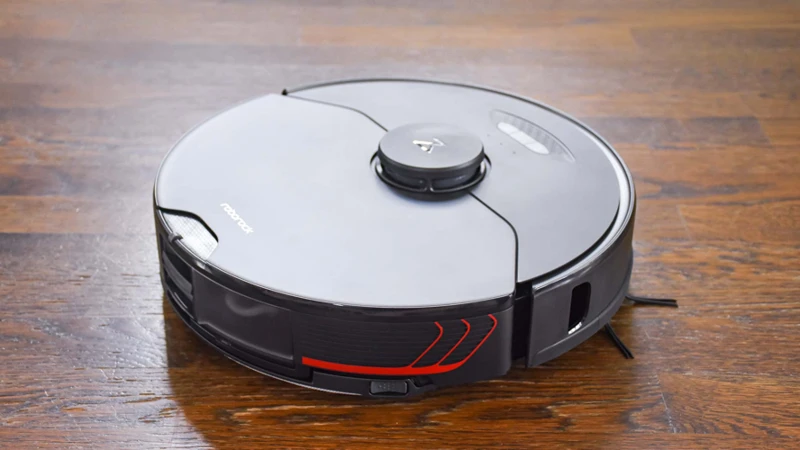
When it comes to choosing the perfect smart vacuum cleaner, there are several factors you should take into account. The market is flooded with options, which can make it challenging to settle on a suitable choice. However, with the right knowledge, you can find a smart vacuum that matches your unique needs. In this next section, we’ll explore several key factors to consider when selecting a smart vacuum. From battery capacity and voltage to smart features and noise levels, we’ll guide you through the various elements that must be taken into account to help you make an informed decision.
Battery Capacity and Voltage
One of the most important factors to consider when choosing a smart vacuum with a long-lasting battery life is the battery capacity and voltage. It’s vital to choose a smart vacuum with a battery capacity that suits your cleaning needs. Typically, smart vacuums with larger battery capacities have longer run times and can clean bigger areas before needing a recharge.
When it comes to voltage, a higher voltage typically means more power, which translates to better suction and cleaning performance. However, higher voltage often comes at a cost, both in terms of the price of the vacuum and the weight of the vacuum. So, it’s important to strike a balance between power and weight.
To help you make an informed decision when selecting a smart vacuum cleaner with a long-lasting battery life, here are some essential points to keep in mind:
- Look for a smart vacuum with a battery capacity of between 2,500mAh and 5,000mAh if you have a small apartment or a small cleaning area.
- If you are looking to clean a larger area, look for a smart vacuum with a battery capacity of 5,000mAh or higher. This will enable you to cover more significant areas without stopping to recharge the battery.
- Consider a smart vacuum with a higher voltage if you have pets, lots of carpets, or hard-to-clean areas such as stairs or crevices. This will help you get better cleaning performance and keep your home dust-free.
By paying attention to the battery capacity and voltage of a smart vacuum cleaner, you can ensure that you are investing in a vacuum that meets your cleaning needs, has a long-lasting battery life, and will provide you with more efficiency and convenience when it comes to cleaning your home or office space.
Type of Battery
When it comes to choosing a smart vacuum cleaner with long-lasting battery life, understanding the type of battery it uses is crucial. The type of battery used in a smart vacuum affects not only the battery life, but also the overall performance of the vacuum. Here are some common types of batteries used in smart vacuums:
- Lithium-ion batteries: These are currently the most popular type of battery used in smart vacuums, and for a good reason. Lithium-ion batteries are known for their high energy density, quick charging time, and longer lifespan compared to other types of batteries. They are also lightweight, making them ideal for use in portable devices like smart vacuums.
- Nickel-metal hydride batteries: While not as popular as lithium-ion batteries, nickel-metal hydride (NiMH) batteries are also commonly used in smart vacuums. NiMH batteries are heavier and larger than lithium-ion batteries, but they are cheaper and have a longer shelf life. They are also more environmentally friendly than other types of batteries.
- Nickel-cadmium batteries: This type of battery is rarely used in smart vacuums anymore due to environmental concerns. Nickel-cadmium (NiCad) batteries have a lower energy density than the other two types of batteries, and they also have a memory effect. This means that if you don’t fully discharge and recharge them, they will lose their capacity over time.
Ultimately, the type of battery you choose will depend on your personal preferences and needs. If you’re looking for a smart vacuum with a longer lifespan and quick charging time, lithium-ion batteries are the way to go. If you’re on a budget and don’t require the latest technology, nickel-metal hydride batteries are a great alternative. However, if you’re concerned about the environment, there are some eco-friendly options available as well.
Battery Life and Run Time
When it comes to buying a smart vacuum cleaner, the battery life and run time are important factors to consider. Battery life refers to how long the battery will last before needing to be recharged, while run time is the amount of time the vacuum can be used before the battery completely runs out. Before making a purchase, it’s important to consider how long you’ll need to use the vacuum for, as well as any other factors that may affect its battery life.
Here are some factors to consider when evaluating a smart vacuum’s battery life and run time:
- Battery Capacity: The higher the capacity of the battery, the longer the vacuum will run without needing to be recharged. Look for a vacuum with a battery capacity of at least 2000mAh.
- Voltage: The higher the voltage, the more cleaning power the vacuum will have. However, higher voltage also means a shorter battery life. Look for a vacuum with a voltage between 14.4V and 22.2V.
- Type of Battery: There are two main types of batteries used in smart vacuums: NiMH and Li-ion. Li-ion batteries are generally more efficient and longer-lasting than NiMH batteries.
- Charging Time: Consider how long the vacuum takes to fully charge. A shorter charging time means you’ll be able to use the vacuum more frequently without needing to plan for long charging times.
In addition to these factors, it’s important to consider how you’ll be using the vacuum. If you have a large home that you’ll be vacuuming frequently, you’ll want to choose a vacuum with a longer run time. Conversely, if you only need to clean small areas or have limited storage space, a vacuum with a shorter run time may be sufficient.
Regular maintenance of the vacuum can also help improve its battery life and run time. By cleaning the dustbin and filter regularly, using the correct attachments for different surfaces, and keeping the brushes clean, you’ll be able to keep your vacuum running efficiently and save energy in the long run.
When it comes to choosing a smart vacuum with a long-lasting battery life and run time, it’s important to evaluate each model carefully and consider all factors that may impact its performance. By doing so, you’ll be able to choose a vacuum that not only meets your cleaning needs but also lasts for years to come.
Charging Time
When it comes to choosing a smart vacuum cleaner with long-lasting battery life, one of the factors to consider is the charging time. You don’t want to spend all day waiting for your vacuum cleaner to charge, and you also don’t want to end up with a vacuum that takes forever to charge and runs out of battery quickly. Here are some tips to help you choose a smart vacuum cleaner with an ideal charging time:
- Look for a quick-charging battery: A quick-charging battery can help you save time and ensure you always have enough battery life. Look for a vacuum cleaner that can fully charge in less than three hours. Some models even come with fast charging technology that can fully charge the vacuum in less than an hour.
- Consider the battery life: The charging time of a smart vacuum cleaner also depends on the battery life. If you have a vacuum cleaner with a longer battery life, you can get away with charging it less frequently. Check the battery life of the vacuum before making a purchase.
- Think about your cleaning schedule: Another factor to consider when looking at the charging time of a smart vacuum cleaner is how often you plan to use it. If you only need to vacuum your home once or twice a week, a vacuum cleaner with a longer charging time may be just fine. However, if you need to vacuum your home every day, look for a vacuum cleaner that can fully charge quickly.
- Consider a vacuum with a removable battery: Another option is to look for a smart vacuum cleaner with a removable battery. This allows you to charge the battery outside of the vacuum and keep a spare battery for longer cleaning sessions. Some vacuums even come with two batteries so you can alternate between them while cleaning.
It’s important to consider the charging time when choosing a smart vacuum cleaner with long-lasting battery life. A quick-charging battery, good battery life, and a removable battery are all factors to consider when making your selection.
Smart Features
When it comes to choosing a smart vacuum cleaner with a long-lasting battery life, it’s important to consider the various smart features that it offers. Here are some of the top features you should look for:
- Wi-Fi connectivity: Having Wi-Fi connectivity allows you to control your smart vacuum from your smartphone, and even set schedules for cleaning.
- Voice control: If you have an Amazon Alexa or Google Assistant, a smart vacuum with voice control can be a game-changer, allowing you to start, stop, and even dock your vacuum with just your voice.
- Multifunctional: If you’re looking for a vacuum that can do more than just clean floors, look for features like mopping or dusting attachments, which can help you tackle multiple cleaning tasks with one machine.
- Mapping capabilities: Some smart vacuums can create a map of your home to ensure it covers every inch of your floors, and won’t get stuck or fall down stairs.
- Scheduling: The ability to set a schedule allows you to have your floors cleaned while you’re away from home, reducing interruptions to your daily routine.
By taking advantage of these smart features, you can make the most of your smart vacuum and keep your floors looking great with minimal effort.
Noise Level
When considering a smart vacuum cleaner, noise level is an important factor to keep in mind. No one wants a vacuum that sounds like a jet engine taking off while cleaning their home. Here are some important points to consider regarding noise level:
- Decibel Level: The decibel (dB) level of a vacuum is a measure of its noise level. Look for vacuums with a decibel level of around 60-70 dB. These tend to be quieter, making them more suitable for daytime use or use in apartments.
- Smart Features: Some smart vacuums come with features like “quiet mode” which can reduce the decibel level even further. If quiet cleaning is a top priority, consider investing in a smart vacuum with these types of features.
- Brushless Motors: Brushless motors tend to be quieter than their brushed counterparts. If you want a quiet smart vacuum, consider looking for one with a brushless motor. However, keep in mind that these tend to be more expensive.
- Room Mapping: Smart vacuums with room mapping features tend to be more efficient with their cleaning. This means less time spent cleaning and less noise overall.
Remember, a quieter vacuum can make cleaning less disruptive to others in the household and more enjoyable for yourself. Always keep the noise level in mind when purchasing a smart vacuum cleaner. So, choose the vacuum cleaner wisely which is perfect fit for your needs.
Tips for Maintaining Your Smart Vacuum’s Battery Life
Now that you’ve invested in a smart vacuum with long-lasting battery life, you want to make sure that it performs at its best for as long as possible. Maintaining your vacuum’s battery life requires a bit of effort and attention to detail, but the rewards are worth it. Here are some valuable tips to help you extend the life of your smart vacuum’s battery and keep it running at optimal performance. By following these tips, you’ll be able to get the most out of your vacuum while keeping it in great condition.
Clean the Dustbin and Filter Regularly
Ensuring that you clean the dustbin and filter of your smart vacuum cleaner on a regular basis is essential for maintaining its battery life. Over time, dust and debris can accumulate in the dustbin and filter, which can affect the suction power of the vacuum and put more strain on the battery.
Here are some tips on how to clean the dustbin and filter of your smart vacuum cleaner:
- Empty the dustbin after each use: Make it a habit to empty the dustbin of your smart vacuum cleaner after each use. This prevents dust and debris from building up in the dustbin, which can affect the efficacy of the vacuum cleaner.
- Clean the dustbin: Once you have emptied the dustbin, take a damp cloth or microfiber cloth and wipe down the inside of the dustbin. This will help to remove any dust or debris that may have accumulated on the walls or corners of the dustbin.
- Clean the filter: It is important to also clean the filter of your smart vacuum cleaner regularly. Check the manufacturer’s instructions for information on how to remove the filter from your particular model of vacuum cleaner. Once you have removed the filter, tap it lightly to remove any loose dust or debris. You can also use a soft brush or a can of compressed air to clean the filter. Make sure the filter is completely dry before replacing it in the vacuum.
- Replace the filter: Depending on the frequency of use, it is recommended to replace the filter of your smart vacuum cleaner every 6-12 months. This will ensure that your vacuum cleaner is working at optimal efficiency and will help to extend its battery life.
By regularly cleaning the dustbin and filter of your smart vacuum cleaner, you can help to maintain its battery life and ensure that it is working effectively.
Use the Correct Attachments for Different Surfaces
When considering how to maintain your smart vacuum’s battery life, one important factor to keep in mind is using the correct attachments for different surfaces. Here are a few tips to help you choose the right attachments and get the most out of your vacuum:
1. Check the instructions: Most smart vacuums come with a variety of attachments that are designed for different purposes. Check the user manual to see which attachments are recommended for cleaning different surfaces, such as carpet, hardwood floors, or upholstery.
2. Use the right brushroll: If your vacuum has a brushroll attachment, make sure to use the appropriate one for the type of flooring you are cleaning. Some brushrolls may be too rough for delicate hardwoods, while others may not provide enough agitation to effectively clean carpets.
3. Use the crevice tool: To clean tight spaces and hard-to-reach areas, use the crevice tool attachment. This attachment is perfect for cleaning between sofa cushions, in the corners of rooms, and along baseboards.
4. Consider a pet hair attachment: If you have pets, a pet hair attachment can be a game-changer. These attachments are designed to easily pick up pet hair and dander from furniture and floors, making cleaning up after your furry friends a breeze.
5. Use the upholstery brush: Upholstery can be tricky to clean, but using the right attachment can make the job much easier. An upholstery brush is gentle enough to avoid damaging fabric but is still effective at lifting dirt and debris.
By using the right attachments for different surfaces, you can ensure that your smart vacuum is working as efficiently as possible. This not only helps maintain battery life, but also ensures that your home is as clean as possible. So make sure to reference the user manual and experiment with different attachments to get the most out of your smart vacuum cleaning experience.
Keep the Brushes Clean
Regular cleaning of the brushes is crucial for maintaining the performance and longevity of your smart vacuum cleaner’s battery life. It is because the brushes can easily get clogged with hair, dust, and debris, which can impede the vacuum’s ability to clean effectively.
Here are some tips for keeping your smart vacuum’s brushes clean:
- Check the Brushes Regularly: Inspect the brushes for any hair or debris accumulation, and remove them using a brush or scissors. Ideally, you should clean your brushes after every use, especially if you have pets that shed a lot.
- Remove the Brushes: Most smart vacuums have detachable brushes that you can easily remove for cleaning. If your vacuum has this feature, take advantage of it and remove the brushes for thorough cleaning.
- Clean the Brushes: Use a cleaning tool or brush to remove hair or debris buildup from the bristles. You can also soak the brushes in warm soapy water to remove any stubborn dirt or grime. Just make sure to dry them completely before reattaching them to your vacuum.
- Replace Worn-Out Brushes: Over time, the brushes will wear out and lose their bristles, which can affect their cleaning performance. It is essential to replace the worn-out brushes promptly to prevent further damage and ensure optimal cleaning efficiency.
By keeping your vacuum’s brushes clean, you can ensure that it performs at its best and lasts longer. It also prevents any damage to the battery that can be caused by the vacuum working harder due to dirty brushes.
Store Your Smart Vacuum Correctly
Storing your smart vacuum cleaner correctly is essential for maintaining its battery life and overall performance. Here are some tips on how to store it properly:
| Tip | Description |
| 1 | Keep the vacuum in a cool, dry place away from direct sunlight and heat sources to prevent damage to the battery. |
| 2 | Store the vacuum in an upright position to prevent the brushes from bending or becoming misshapen, which can damage the motor and decrease its performance. |
| 3 | If you need to store the vacuum for an extended period, remove the battery and store it separately in a cool, dry place. |
| 4 | Avoid keeping the vacuum in places with high humidity or moisture, as this can damage the battery or cause rust on the metal components. |
| 5 | Always clean the dustbin and filters before storing the vacuum to prevent odors and mildew from developing inside. |
By following these simple tips, you can ensure that your smart vacuum stays in good condition and keeps performing at its best for a long time. Proper storage can help prevent damage to the battery and other components, which can shorten the vacuum’s overall lifespan. So, take the time to store your vacuum correctly and enjoy its benefits for years to come.
Use Your Vacuum Regularly
One important way to maintain the battery life of your smart vacuum cleaner is to use it regularly. Here are some reasons why regular use can be beneficial:
- Prevents dust and dirt buildup: Regular use of your smart vacuum cleaner will prevent dust and dirt particles from accumulating on your floors and surfaces. This means that you won’t need to use as much power to clean when you do use your vacuum, which can help extend your battery life.
- Keeps the brushes moving: The brushes in your smart vacuum cleaner are responsible for picking up dirt and debris. If they are not used regularly, they can become stiff and stop moving, which can result in reduced efficiency and power usage from your vacuum.
- Helps identify potential issues: If you use your smart vacuum cleaner regularly, you will be more likely to notice any potential issues that may impact its efficiency. For example, if you notice that it is not picking up debris like it used to, you may be able to identify and fix the issue before it becomes a bigger problem.
- Maintains your floors: Regular use of your smart vacuum cleaner can also help maintain your floors by removing dirt and debris that can scratch or damage surfaces over time.
- Improves air quality: Regular vacuuming can also help improve the air quality in your home by removing dust and allergens that can cause respiratory issues.
Using your smart vacuum cleaner on a regular basis can have numerous benefits for both the machine itself and your home environment. By keeping the brushes moving and preventing dust buildup, you can help extend the battery life of your device and ensure that it continues to operate efficiently for years to come.
Conclusion
After going through this comprehensive guide, you should now have a better understanding of how to choose a smart vacuum cleaner with long-lasting battery life. By considering the factors such as battery capacity and voltage, type of battery, battery life and run time, charging time, smart features, and noise level, you can make an informed decision when shopping for a smart vacuum.
Remember to also maintain your smart vacuum’s battery life by regularly cleaning the dustbin and filter, using the correct attachments for different surfaces, keeping the brushes clean, storing your smart vacuum correctly, and using your vacuum regularly. These tips will help prolong the life of your battery and ensure that your smart vacuum performs optimally for a longer period of time.
Investing in a high-quality smart vacuum cleaner with a long-lasting battery life can significantly improve your cleaning experience and save you time and effort in the long run. The smart features that come with such a device make it even more convenient and efficient.
With the increasing demand for smart home appliances, it is important to equip your home with the latest technology to enjoy a comfortable and convenient lifestyle. By choosing a smart vacuum cleaner with long-lasting battery life and smart features, you can take a significant step towards achieving that.
Frequently Asked Questions
What is the benefit of a smart vacuum cleaner?
A smart vacuum cleaner allows for hands-free cleaning and often has advanced features such as scheduling and app control.
What is the average battery life of a smart vacuum cleaner?
The average battery life of a smart vacuum cleaner is around 1-2 hours depending on the model and usage.
Can I replace the battery in my smart vacuum cleaner?
It depends on the model. Some smart vacuum cleaners have replaceable batteries, while others do not.
What type of battery is best for a smart vacuum cleaner?
Lithium-ion batteries are typically the best option for smart vacuum cleaners due to their high energy density and long lifespan.
How long does it take to charge a smart vacuum cleaner?
The charging time for a smart vacuum cleaner can range from 1-4 hours depending on the model and type of battery.
What are some smart features to look for in a vacuum cleaner?
Smart features to consider include scheduling, app control, mapping technology, and voice control.
How do I clean the dustbin and filter of my smart vacuum?
You can clean the dustbin and filter by removing them from the vacuum and washing them with soap and water. Make sure they are completely dry before reattaching them.
What should I do if my smart vacuum cleaner is making a lot of noise?
You may need to check the brush and wheels for obstructions or replace faulty parts. It’s also important to clean the dustbin and filter regularly to maintain proper airflow.
Can I use my smart vacuum cleaner on all surfaces?
Most smart vacuum cleaners are designed to be used on a variety of surfaces including carpet, hardwood floors, and tile. However, make sure to use the appropriate attachments for each surface to avoid damage.
How often should I use my smart vacuum cleaner?
It’s recommended to use your smart vacuum cleaner 1-2 times per week for maintenance cleaning, but usage can vary depending on your household’s needs.

